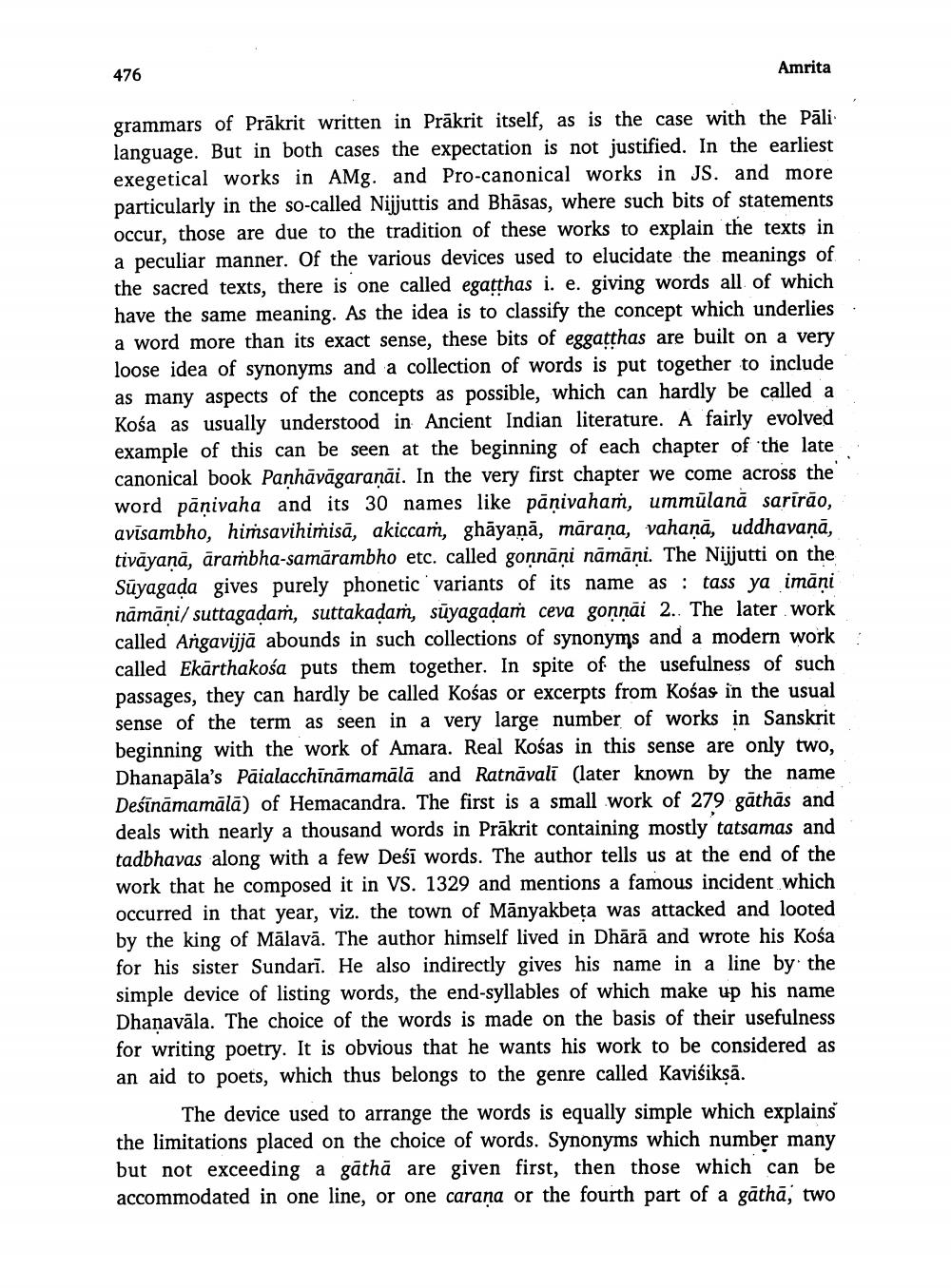________________
476
Amrita
grammars of Prākrit written in Prākrit itself, as is the case with the Pāli: language. But in both cases the expectation is not justified. In the earliest exegetical works in Amg. and Pro-canonical works in JS. and more particularly in the so-called Nijjuttis and Bhāsas, where such bits of statements occur, those are due to the tradition of these works to explain the texts in a peculiar manner. Of the various devices used to elucidate the meanings of the sacred texts, there is one called egatthas i. e. giving words all of which have the same meaning. As the idea is to classify the concept which underlies. a word more than its exact sense, these bits of eggatthas are built on a very loose idea of synonyms and a collection of words is put together to include as many aspects of the concepts as possible, which can hardly be called a Kośa as usually understood in Ancient Indian literature. A fairly evolved example of this can be seen at the beginning of each chapter of the late canonical book Panhāvāgaranāi. In the very first chapter we come across the word pāņivaha and its 30 names like pāņivahań, ummulană sarirão, avīsambho, hiṁsavihimisā, akiccam, ghāyaṇā, māraņa, vahaņā, uddhavanā, tivāyanā, ārambha-samārambho etc. called goņnāņi nāmāņi. The Nijjutti on the Suyagada gives purely phonetic variants of its name as : tass ya imani nāmāņi/ suttagadań, suttakadaḥ, sūyagadaṁ ceva gonnāi 2.. The later work called Angavijjā abounds in such collections of synonyms and a modern work : called Ekārthakośa puts them together. In spite of the usefulness of such passages, they can hardly be called Kośas or excerpts from Kośas in the usual sense of the term as seen in a very large number of works in Sanskrit beginning with the work of Amara. Real Kośas in this sense are only two, Dhanapāla's Pāialacchīnāmamālā and Ratnāvali (later known by the name Deśīnāmamālā) of Hemacandra. The first is a small work of 279 gāthās and deals with nearly a thousand words in Prākrit containing mostly tatsamas and tadbhavas along with a few Deśī words. The author tells us at the end of the work that he composed it in VS. 1329 and mentions a famous incident which occurred in that year, viz. the town of Mānyakbeta was attacked and looted by the king of Mālavā. The author himself lived in Dhārā and wrote his Kosa for his sister Sundari. He also indirectly gives his name in a line by the simple device of listing words, the end-syllables of which make up his name Dhanavāla. The choice of the words is made on the basis of their usefulness for writing poetry. It is obvious that he wants his work to be considered as an aid to poets, which thus belongs to the genre called Kaviśiksā.
The device used to arrange the words is equally simple which explains the limitations placed on the choice of words. Synonyms which number many but not exceeding a gāthā are given first, then those which can be accommodated in one line, or one carana or the fourth part of a gāthā, two




